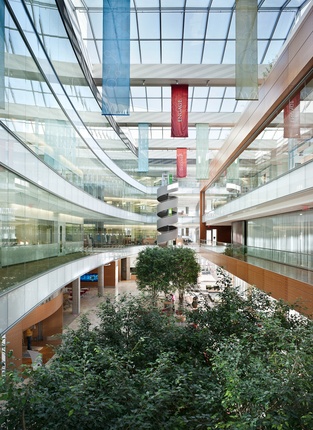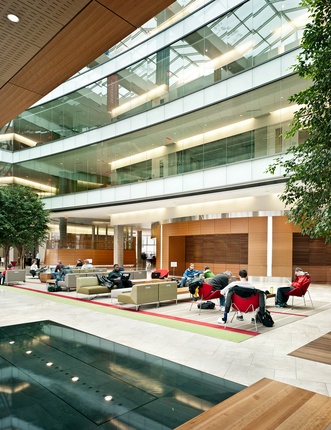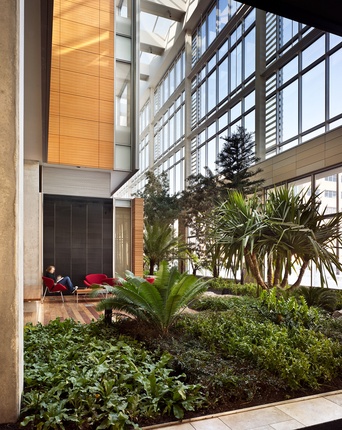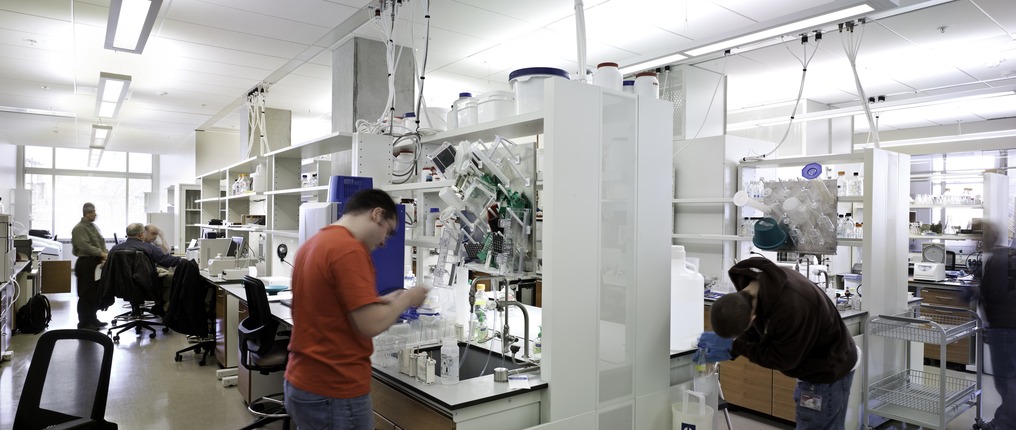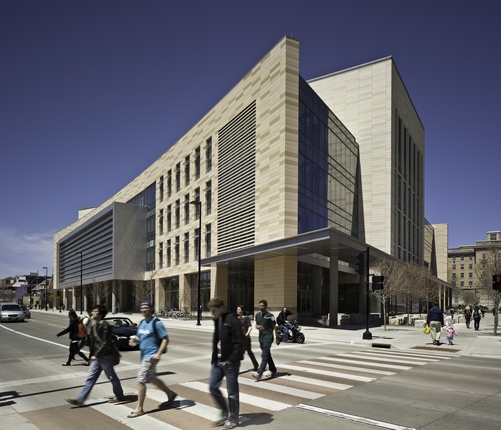
The Wisconsin Institutes for Discovery is an innovative 303,300 SF, public/private facility designed for interaction, community, and collaboration. The building was designed and constructed to be a true 100-year facility. Consisting of twin institutes, one public and one private, this state-of-the-art, five-story facility is located in the heart of the UW-Madison campus. Composed of the public Wisconsin Institute for Discovery (WID) and the private Morgridge Institute for Research (MIR), the facility serves as a hub for interdisciplinary research, bringing scientists together from a broad spectrum of disciplines while involving faculty and staff in the arts and humanities, education and outreach, as well as scholars of the interdisciplinary research process itself.
The building’s concept in itself is the product of a unique collaboration between the State of Wisconsin, University of Wisconsin - Madison, the Wisconsin Alumni Research Foundation, and private donors John and Tashia Morgridge. Unlike traditional research facilities, the twin institutes bring together forward-thinking researchers in both a formal and informal setting, all with a unique tie to the public via a Town Center.
As a LEED Gold Certified facility, the team incorporated a variety of sustainable elements into the building’s construction. One of the most notable is the team’s development and construction of a unique geothermal HVAC system. The ground far below much of Madison is particularly efficient for creating geothermal heating and cooling, and the project took advantage of this. The team drilled 75 boreholes, 300 feet deep below the site, to capture the geothermal energy of the earth. Each hole allows the transfer of heat to or from the earth when heating or cooling the building. The exchange is coupled to the building’s mechanical systems that distribute heat from warm areas of the building to areas lacking heat. Using geothermal power for heating and cooling is expected to be so efficient that it will cut the projected energy use of the facility by 10% annually. The system is expected to function for at least 50 years and will provide 3.6 million BTUs of heating and cooling capacity.
Additional sustainable features include:
- Rooftop solar panels
- Energy-efficient mechanical systems
- A heat-recovery system for laboratory exhaust
- Triple-pane glazing
- Groundwater recovery system for multiple uses including irrigation of interior planting
- A night flush system to cool the building during summer months
- Intelligent building architecture that monitors all energy and utility usage
Facts And Figures
University of Wisconsin & Wisconsin Alumni Research Foundation & State of Wisconsin
Completed December 2010
$176,000,000
303,300 square feet
Delivery Methods
Related
Related News + Insights
Related Videos + Webcams
The Team
Awards
Commercial Design Award – Project of the Year – InBusiness Magazine – Madison, 2010
Commercial Design Award – Best Green-Built Project – InBusiness Magazine – Madison, 2010
Commercial Design Award – Best New Development or Renovation – InBusiness Magazine – Madison, 2010
Top Project Award – The Daily Reporter – Milwaukee, 2010
Historic Preservation Award – New Future Landmark – Madison Trust for Historic Preservation – Madison, 2011
Merit Award – American Institute of Architects – Wisconsin Chapter, 2011
Project Leadership Award – Gold – Construction Owners Association of America, 2011
Concrete Design Award – Wisconsin Ready Mixed Concrete Association, 2011
WCREW Showcase Award – Commercial Real Estate Women – Wisconsin Chapter, 2011
Best Project of the Year – Engineering News Record – Midwest, 2011
SE2 Award of Excellence – Wisconsin Green Building Alliance, 2011
Excellence in Hardscape Project Achievement Award – Construction Management Association of America, 2011
Best of State: Engineering Excellence Award – American Council of Engineering Companies – Wisconsin, 2012
Lab Project of the Year Award – R & D Magazine, 2012
Innovation in Green Building Award – U.S. Green Building Council – Washington, DC, 2012
